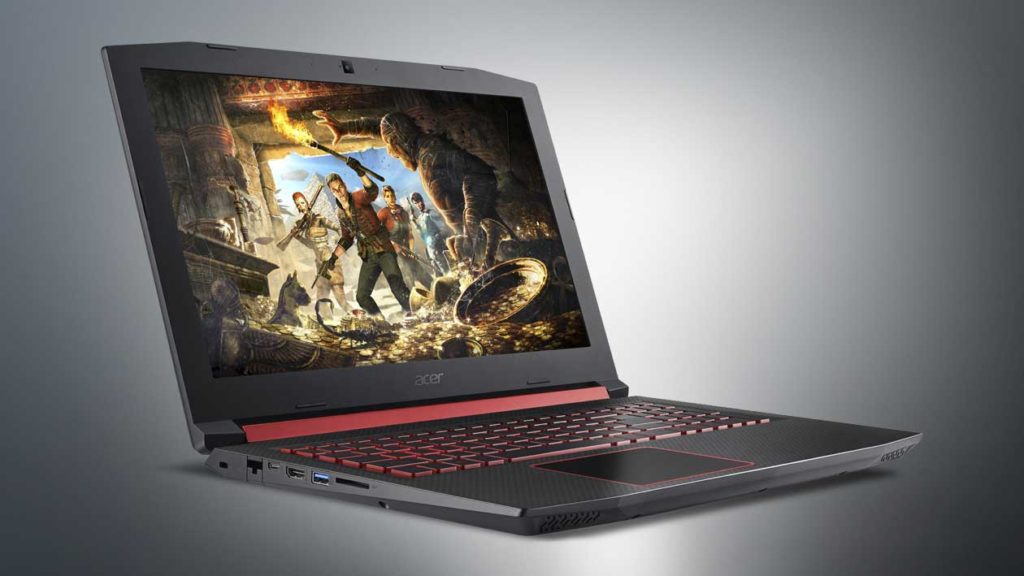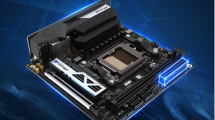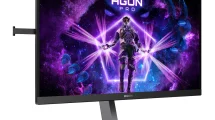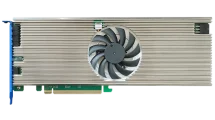I just had to write down the following now, because I neither like the usual conspiracy theories about alleged constraints (although Intel has provided enough reasons for this in the past), nor do I find many forum discussions fair, which once again show that among many forists there seem to be more experts than capable engineers in the development departments. This is mainly of course due to the lack of real information, which is then gladly and for lack of real substance replaced with crumbly speculation until everyone believes it.
Yes, I admit, AMD and notebooks are a thing of their own and always worth a hot discussion. That’s why it’s popular when there’s no other click bait topic. But there are so many factors and causes, which also influence each other, that you really have to unravel this emotionless. For some things AMD really can’t do anything, for others it can do all the more. And Intel? Historically, Intel is the ideal bogeyman for the aluminium hat faction and in the end is only indirectly or passively involved. And then there are the actual manufacturers, trapped in complex supply chains, inventories, high tooling costs, a lack of willingness to take risks and other brakes such as a command hierarchy dating back to before yesterday.
The heart of the whole notebook industry today are the big OEM and ODM like Pegatron, Clevo, Tongfang, Quanta, Compal, BYD and many others and even some supposed hardware manufacturers prefer to use third party companies for the actual production of things like notebooks rather than their own resources. But such an OEM or ODM is just a human being and as such a creature of habit, especially the Asian one. If you want to produce efficiently, you need a healthy microcosm without actionism and hectic activity as well as crystal-clear announcements and messages combined with a reliable, long-term strategy and a solvent partner.
Historical reasons?
AMD simply did not have any competitive products for many years that could have been used in notebooks in masses for the masses. So over the years a kind of Intel-Nvidia monoculture has grown, which Intel likes to see and take along (Nvidia too, of course), but for which no one except AMD is really capable. Not even Intel, who can only be accused of having been too good for years. But such a monoculture is highly dangerous, because it prevents sudden changes and a flexible rethinking. Trapped in one’s own body, it certainly hits the mark quite well.
And why does it all take so long?
The fact that AMD is perhaps wondering why, despite all the technical key data, nobody is euphorically reaching for the new Ryzens and switching production is due to many things. Because you have to know that the big producers have to work with months of lead time, develop platforms and then go through the whole range of tests, be it environmental, HALT or just MTBF assembly tests, certifications and much more.
If you can concentrate on only one supplier for CPUs and GPUs at a time, where very similar products are delivered over years, processes and tests are simplified considerably, because many things can be taken over again and again or only have to be slightly modified. Electrically and mechanically, many things remain the same. One must not forget that a PC is only the duty, but a notebook is the freestyle. This is a very fragile thermal and electrical structure, whose balance can get out of kilter faster than a rather coarse PC. AMD does many things differently from Intel, which presents everyone with new challenges.
Apart from the technical sensitivities, there are things like stocking / warehousing, market and procurement, and the big unknown with prices and availability. One must not forget that these are real big companies with many thousands of employees, which you can’t just beat on the track again. And as big as they may look – financially even these constructs are usually fragile and depend on solid continuity. Well, and then came Ryzen.

A lot is different at AMD
Right now, it’s unfortunately going to be small and I’ll probably have to get lost a bit in the details that describe the daily routine of such a development quite well. Of course, I have to protect the sources, too, in order not to allow conclusions about the author from a supposedly trivial anecdote. Let’s start with the development and support by the chip vendors, without whom nothing would work at all. There are no blueprints, and here we have to break new ground again and again based on the documentation of the chip suppliers.
AMD’s resources, especially manpower, are still very limited in view of the many producers and the large market. If AMD cannot explain a new product (immediately) and help with the first steps, the hurdle is already quite high. Also in the post-field, up to the ongoing mass production and the follow-up tasks such as a functioning RMA, it must be possible to communicate continuously and in partnership. This is like assisted living, but with technology. Which brings us to the sensitivities. If you talk to the manufacturers, you hear the same arguments again and again, which can be broken down to the most important points.
General
– Unclear supply and allocation situation for key components
– Own stocks and availability of newly procured components
– The lack of long-term strategies and thus a lack of planning security
– Hardly any own market experience, but prejudices among the decision makers of many customers
In the technical context:
– Limited support from AMD (little or not enough suitable personnel)
– Licenses and additional costs
– Hardly any experience in dealing with AMD’s energy management
– NVIDIA and AMD technology conflicts (see below)
– Hardly any experience with memory support
– Firmware and compatibility issues
– Problems with drivers for different operating systems
Of course, up to now this has all been very general or roughly outlined, which would take us to the details, which can certainly illustrate the daily problems a little better.
NVIDIA’s Burden and AMD’s Suffering
But to blame AMD alone would also be unfair. Let’s take NVIDIA and the combination with an AMD substructure, also to show how hard the market is fighting. One wonders why it should be so difficult to combine AMDs CPUs with integrated graphics with the better Nvidia chips. Nvidia’s Optimus works quite well, as the current notebooks from e.g. Schenker prove. Only that the important MUX switch is missing here, so that Optimus can’t be deactivated on AMD hardware and the display can be switched internally.
I have to explain this very briefly. First of all, we have what NVIDIA calls Dynamic Boost Technology. This is essentially NVIDIA’s proprietary counterpart to AMD’s new SmartShift technology found in the Ryzen Mobile 4000 APUs. Like SmartShift, NVIDIA’s Dynamic Boost was developed to take advantage of the fact that in many laptop designs the GPU and CPU share a common heat budget, typically because both are cooled by the same set of heat pipes. In practice, this is usually done to allow OEMs to build relatively thin and lightweight systems where the cooling capacity of the system is more than the TDP of either the CPU or GPU alone, but less than the total TDP of these two processors combined.
This allows OEMs to develop customized profiles for different scenarios, allowing more leeway for one or the other component at a time. So if both processors share a common cooling system, why not increase their power limits and then intelligently divide the system’s heat budget? We’ll see that this can be problematic outside SmartShift with the reported temperature values.
The NVIDIA solution stands out because it is the first generic solution that works on multiple platforms. While AMD’s SmartShift was developed alone and proprietary to combine AMD APUs and GPUs to push (and seal off) the AMD ecosystem and its platform control structure, NVIDIA, as a joint GPU supplier for both platforms, had to develop a solution that works across all platforms. So Dynamic Boost can be used with both Intel’s core processors and AMD’s Ryzen processors. Doesn’t sound so unfair at first, does it?
But here’s the thing. In addition to Dynamic Boost, NVIDIA is pushing another new laptop technology called Advanced Optimus, which is also a bit of a foreclosure. Advanced Optimus is an evolution of NVIDIA’s Optimus technology that allows you to use G-Sync with the necessary power-saving technology. There we have it, because the MUX switch is only worth it if you get G-SYNC support! Apart from the fact that AMD’s integrated graphics will intentionally not support Advanced Optimus, there is also the 25 USD additional cost for G-SYNC. In addition, the OEM will no longer be allowed to offer a model with a certain panel in parallel without G-SYNC, but at a lower price. Thus, Advanced Optimus only works if the manufacturer also orders G-SYNC. What a coincidence, especially since NVIDIA itself now categorically excludes support for Advanced Optimus on AMD platforms. Snapped?
But support and training also leave open questions. An AMD webinar like this, for example, can leave you with a strange feeling when legitimate requests for BIOS options for undervolting (Intel strictly prohibits this in both directions) are completely ignored. And whoever wonders why AMD notebooks always have such strange RAM, should also know that AMD completely refuses the requests of the manufacturers for RAM recommendations and tools for testing the memory controllers. The JEDEC-compliant RAM from the lowest level is therefore nothing more than the logical consequence of this (non-)strategy. In the event of incompatibilities, manufacturers are often left out in the cold, especially since the quality of the local field application engineers fluctuates extremely and often enough not even mails are answered.
Or let’s take the thermal issues again. Who wants to burn their thighs on the underside of a laptop or plastically deform melting keycaps with their fingertips? Those manufacturers who want to avoid the pointless tug of war for SmartShift and Dynamic Boost would rather use a desktop Ryzen. But there are stumbling blocks lurking here too. AMD’s feedback of the internal sensors is partly quite absurd and therefore less suitable for mobile devices.
The jittery Tctl/Tdie values alone are a real problem, as the 50 sensors per CCD tend to report false values and short-term hotspots often enough, which mutate the current notebooks into fan howling buoys. Intel had this years ago, but while such a normal 12cm fan in the PC gallantly ironed out these spikes by its own inertia, the small and fast reacting fans of the notebooks with their very large speed range are a willing victim for acoustic missteps. Firmware adaptation from AMD? No chance.
Conclusion
AMD stonewalls in ambidextrous cover with SmartShift (in the hope of finally getting their own dGPUS in the laptops with RDNA2), NVIDIA emphasizes a right uppercut with Advanced Optimus back to AMD and Intel passively laughs up their sleeve and counts the points. This annoying silicon kindergarten ultimately leads to the current situation, which can probably only be clarified if the customer really puts pressure on these protagonists of the miserable little wars with their demand. Wishful thinking, unfortunately. Is it?






























Kommentieren